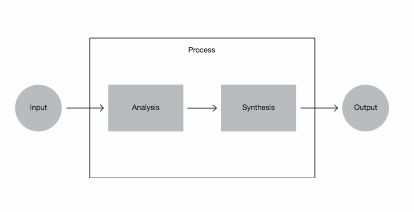An example of the analysis and synthesis method Papanek
Recently, I described a simple scheme of the Koberg and Bagnell design process, in which in the process of solving a problem, it is first analyzed (split into pieces) and then synthesized (collecting parts in a new form).

How to carry it out in practice? Victor Papanek offers several ways, including the use of a “paper computer” that generates ideas. In general, the process is as follows:
')
1. We will make several paper “columns” - one for each technical component of the problem solution. Then, on each column, we write out all the probable and improbable variants of this technical component known to us. At this stage it is not necessary to correlate them with the task.

When everything is ready - this is the analysis.
How to conduct a synthesis read under the cut. If you are interested in other schemes for solving problems or Papanek's ideas, I have some information on my site, including about solutions using bisocociations.
2. So, we have broken the problem into parts and we need to carry out a synthesis. For this, we “launch” our paper computer. Linear or random, we move all the columns in different positions, and write the resulting combinations in a notebook. These will be the decisions that the computer gave us.

3. All we have to do is filter the solutions in several passes. First, remove the most delusional, then difficult to implement, expensive, and so on, until we come to several real options that we will develop.
Notice that a paper computer actually replaces brainstorming with us in order to generate ideas.

How to carry it out in practice? Victor Papanek offers several ways, including the use of a “paper computer” that generates ideas. In general, the process is as follows:
')
1. We will make several paper “columns” - one for each technical component of the problem solution. Then, on each column, we write out all the probable and improbable variants of this technical component known to us. At this stage it is not necessary to correlate them with the task.

When everything is ready - this is the analysis.
How to conduct a synthesis read under the cut. If you are interested in other schemes for solving problems or Papanek's ideas, I have some information on my site, including about solutions using bisocociations.
2. So, we have broken the problem into parts and we need to carry out a synthesis. For this, we “launch” our paper computer. Linear or random, we move all the columns in different positions, and write the resulting combinations in a notebook. These will be the decisions that the computer gave us.

3. All we have to do is filter the solutions in several passes. First, remove the most delusional, then difficult to implement, expensive, and so on, until we come to several real options that we will develop.
Notice that a paper computer actually replaces brainstorming with us in order to generate ideas.
Source: https://habr.com/ru/post/56349/
All Articles